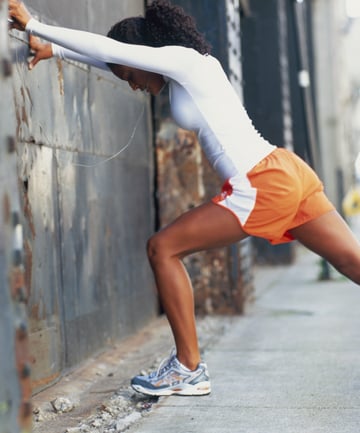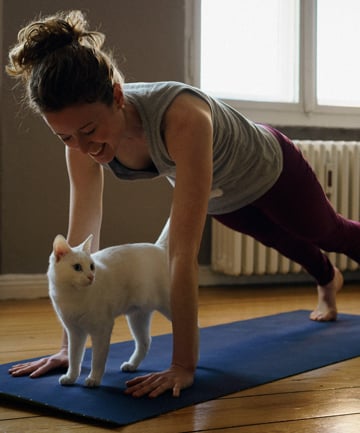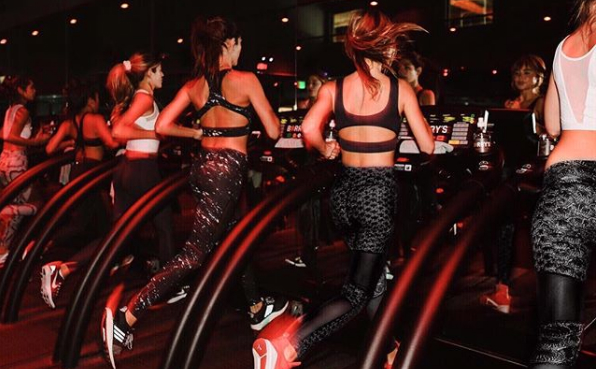We don't need to tell you that stretching is important for preventing muscle soreness and injury when engaging in an exercise program, but depending on your age and health, you might not realize how critical it is for everyday comfort. Back and joint pain is no joke as you age. It's not always easy to carve out time to work on flexibility, which is why it's imperative to have an arsenal of personal tools for staying limber.
We asked Sara Knauer, an aerialist at The Beatles LOVE by Cirque du Soleil, for practical flexibility tips for people at all stages in life. These might not have you flipping in the air, but they just might help mitigate tech neck and other modern-day ailments.
Image via Cirque du Soleil
"You can do dynamic stretching, which is doing controlled movements that take you through your full range of motion, or static stretching, which involves holding a muscle or body part for 30 seconds or more at the edge of its flexibility. Just avoid what professionals call ballistic stretching, which is bouncing in a stretch at your end range of motion or doing anything else that uses uncontrolled movements or momentum. Always listen to your body when stretching," Knauer says.
Image via Hoxton/Sam Edwards/Getty
"Be sure to give your body an appropriate warm up. What your body requires may vary depending on the activity, but a general guideline is to do something that raises your core temperature or gets your blood moving. This could mean taking a few minutes on a treadmill or an elliptical machine, or body weight movements like squats, lunges and sit-ups and, while you should use a bit of activity to get your body warm, make sure you keep it warm by either continuing to move throughout your stretching session, layering on warm clothes or simply staying in a warm room. A cold muscle is never a flexible one!" Knauer says.
Image via White Packert/Getty
"We all have some muscles that are naturally more flexible than others and it's really tempting to focus on those since they tend to make progress more quickly and easily. Keeping your body and your muscles evenly flexible can prevent unnecessary wear and tear caused when unbalanced muscles begin compensating for one another. Make sure you stretch, bend or twist to both sides. In the same way, look for stretches that challenge your flexibility in both the front and back of your body," Knauer says.
Image via Halfdark/Getty
"Maintaining flexibility and staying fit is all about consistency and it's so much easier to keep up with an activity you enjoy. If you're able to safely take your body through its full range of motion during that activity then you'll maintain your flexibility by just doing something you love. If the activity doesn't really lend itself to using your full range of motion, just do some static stretching afterwards as a cool-down," Knauer says.
Image via Cirque du Soleil









